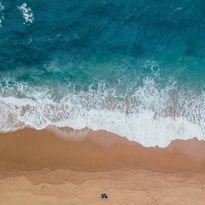In Mosa Mack’s Oceans and Climate unit, students are led through a progression of three inquiry lessons that focus on the effects of changes in latitude, temperature, wind, the Coriolis effect, and density on regional climate.
- Lesson 1

Lesson 1: The Solve
Students work together to complete an Oceans and Climate Vocabulary Mind Map before helping Mosa Mack solve the mystery of the missing gnome lost at sea. By the end of The Solve, students discover that earth’s rotation, wind, land, and density impact ocean currents. (75 mins)
- Lesson 2

Lesson 2: The Lab
Students determine whether it’s possible for two cities at the same latitude to have different climates. Over the course of multiple days, students will investigate the impact that latitude, ocean currents, heat, and geography have on a region’s climate. They will use evidence from their investigations to support their findings. (six 40-minute class periods)
- Lesson 3

Lesson 3: The Engineer
Students develop and design a device capable of harnessing energy from the ocean. (250 mins)


